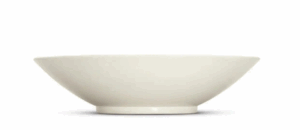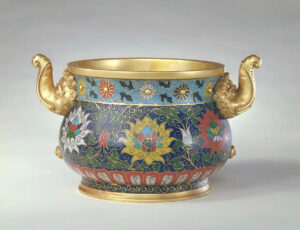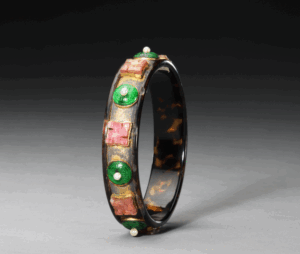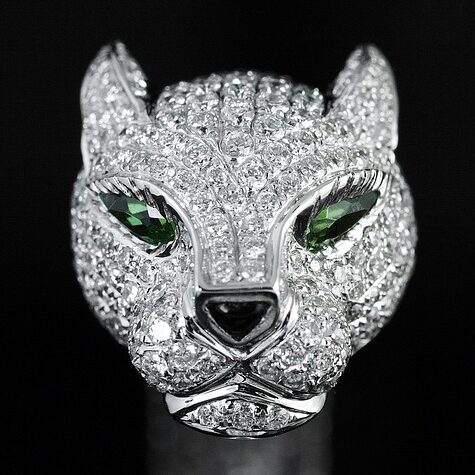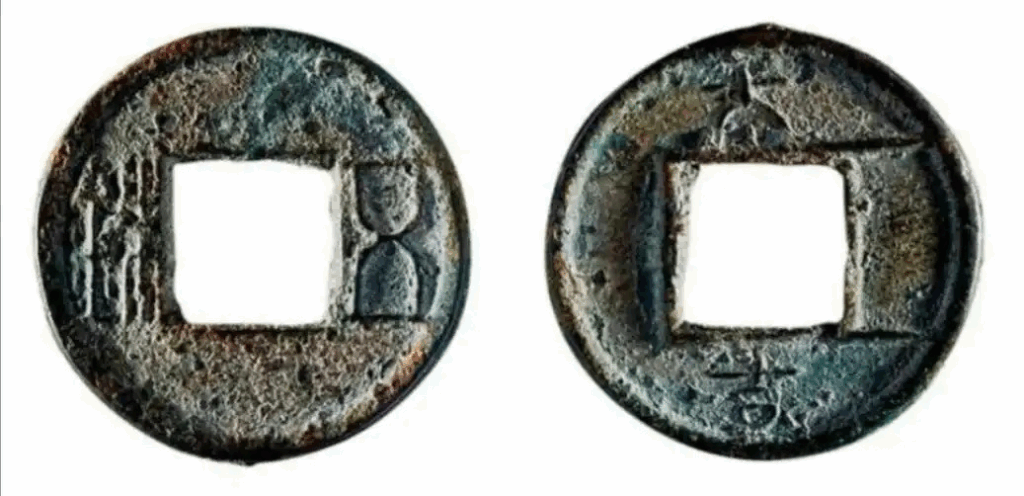
Charm Coins: The Ancient Tokens That Outvalued Money
When Coins Stopped Being Currency and Became Magic
Unlike circulating coins, huāqián (花钱) transcended economics to become 3D talismans—metal canvases where wishes were cast in bronze and blessings etched in silver. From Han dynasty exorcism coins to Song Daoist amulets, these “non-money” objects often held greater cultural value than their circulating counterparts. At VirtuCasa, we preserve these narratives through NFT twin certificates and XRF alloy analysis, ensuring each charm’s story survives digitization.
當錢幣超越貨幣成為法器
與流通幣不同,花錢(Chinese charm coins)超越了經濟功能成為立體護符——願望鑄於青銅、祝福刻於白銀的金屬畫布。從漢代辟邪錢到宋代道教符咒,這些「非錢之錢」的文化價值常超越流通幣。VirtuCasa透過NFT雙證書與XRF合金分析保存這些敘事,確保每個花錢的故事在數字時代延續。
Chapter 1: Evolution from Currency to Charm (Warring States to Han)
1.1 Proto-Charms (c. 300 BCE)
- Form: Qin banliang coins with reverse inscriptions like “千貝” (thousand shells)
- Function: Dual-purpose—monetary use + wealth invocation
- Material Science: High-tin bronze (22-24% Sn) for crisp character definition
第一章:從貨幣到護符的演變(戰國至漢)
1.1 原始花錢(約公元前300年)
- 形制:秦半兩錢背鑄「千貝」等銘文
- 功能:雙重用途——貨幣功能+財富祈願
- 材料科學:高錫青銅(22-24%錫)確保字口清晰
1.2 Han Dynasty Ritualization (206 BCE-220 CE)
- Breakthrough: Non-circulating guàqián (挂钱) with suspension loops
- Classic Example: “長毋相忘 日入千金” (Eternal remembrance, daily gold gain)
- Metallurgy: Lead-tin alloy casting for faster cooling of intricate patterns
1.2 漢代儀式化(公元前206-公元220年)
- 突破:帶懸掛環的非流通性「挂錢」
- 經典例:「長毋相忘 日入千金」
- 冶金術:鉛錫合金鑄造實現複雜紋路快速冷卻
Chapter 2: Golden Ages of Charm Coins (Tang to Qing)
2.1 Tang Luxury (618-907)
- Imperial Gift: Xǐ’ér qián (洗儿钱)—silver/gold coins for royal births
- Archaeological Find: 2019 Xi’an excavation revealed mercury-gilded birth coins
2.2 Song Daoist Boom (960-1279)
- Daoist Influence: Emperor Huizong’s “教主道君皇帝” title spurred charm production
- Subtypes:
- Star official & zodiac coins (星官生肖钱)
- Reincarnation coins (受生钱)
- Spell coins (符咒钱)
2.3 Ming-Qing Peak (1368-1912)
- Shānguǐ Coins (山鬼钱): Storm spirit charms with 雷部 script (始鑄元末明初)
- Palace Coins (宫钱): Gold/silver for imperial events (e.g.,慈禧太后60壽誕萬壽钱)
第二章:花錢的黃金時代(唐至清)
2.1 唐代奢華(618-907年)
- 皇家禮制:金銀「洗儿钱」用於皇室生育
- 考古發現:2019西安發掘出土汞鎏金誕生錢
2.2 宋代道教風潮(960-1279年)
- 道教影響:徽宗「教主道君皇帝」稱號推動花錢生產
- 子類型:
- 星官生肖钱
- 受生钱
- 符咒钱
2.3 明清巔峰(1368-1912年)
- 山鬼钱:帶雷部文字的風雨神護符(始鑄元末明初)
- 宫钱:皇室典禮用金銀錢(如慈禧六十大壽萬壽钱)
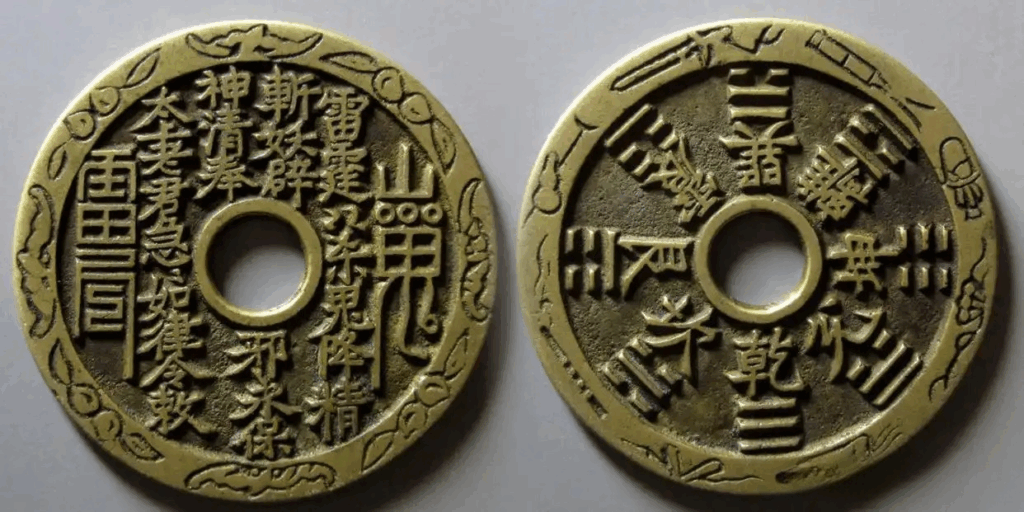
Chapter 3: The Anatomy of a Charm Coin
3.1 Functional Categories
| Type | Purpose | Example |
|---|---|---|
| Religious | Buddhist/Daoist rituals | 禮佛钱 |
| Folk customs | House beam installation | 上梁钱 |
| Decorational | Auspicious phrases | 吉语钱 |
| Personal | Concealed carry amulets | 春宫钱 |
3.2 Manufacturing Hierarchy
- Official mints: Precision casting + mercury gilding
- Private workshops: Cruder alloys (high lead content)
- Size range: 8mm镶嵌钱 to 300mm镇库钱
第三章:花錢結構解析
3.1 功能分類
| 類型 | 用途 | 範例 |
|---|---|---|
| 宗教用途 | 佛/道教儀式 | 禮佛钱 |
| 民俗活動 | 房屋上梁 | 上梁钱 |
| 裝飾功用 | 吉祥語 | 吉语钱 |
| 個人護符 | 隨身攜帶 | 春宫钱 |
3.2 製作等級
- 官鑄:精鑄+汞鎏金
- 私鑄:粗合金(高鉛含量)
- 尺寸範圍:8毫米镶嵌钱至300毫米镇库钱
Chapter 4: Modern Revival and Collecting
4.1 Contemporary Charm Culture
- Cultural IP Coins: Nezha闹海 designs on silver bullion
- Corporate Issues: 9g gold coins for brand promotions
- Daoist Temple Issues: Still casting bronze charms for rituals
4.2 Authentication Guide
- Genuine Patina: Earth-encrusted corrosion patterns (偽銹用膠水黏附)
- Edge Inspection: Hand-filed edges vs. modern machine cuts
- Material Test: XRF analyzers detect zinc (post-1900 additive)
第四章:現代復興與收藏
4.1 當代花錢文化
- 文化IP錢:銀錠上的哪吒闹海設計
- 企業發行:品牌推廣用9克金錢
- 道觀鑄造:儀式用青銅護符仍在生產
4.2 鑑真指南
- 自然包漿:土蝕結晶紋(偽銹用膠黏合)
- 邊緣檢驗:手工銼邊 vs 現代機切
- 材料檢測:XRF分析儀檢測鋅(1900年后添加物)
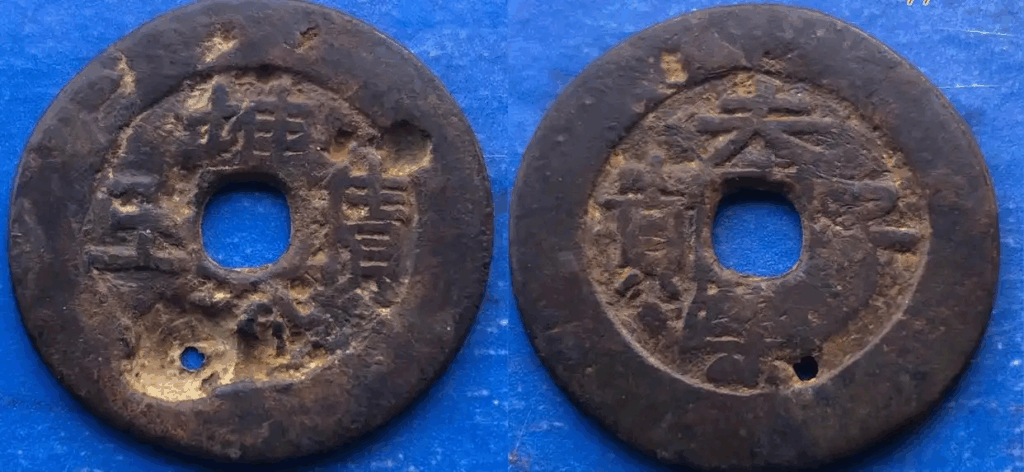
Why Charm Coins Outlive Civilizations
As Song scholar Ouyang Xiu noted: “Coins buy grain, but charm coins buy fate.” These objects embody the ultimate human aspiration—to alloy hope with metal. In our digital age, they remind us that value isn’t minted by governments, but by collective belief.
為何花錢比文明更長壽
如宋人歐陽修所言:「錢購穀,花錢購運」。這些物件體現了人類終極願望——將希望與金屬熔合。數字時代中,它們(Chinese charm coins)提醒我們:價值並非由政府鑄造,而是由集體信仰生成。
From 古币“花钱”漫谈
Read More
- Jadeite Through the Seasons: A Guide to Year-Round Wear and Care
- Understanding Bronze Vessels: Types and Terminology
- Qing Dynasty Porcelain Techniques: Blue-and-White and Underglaze Red
- Metamorphosis: Chinese Sculpture Through the Dynasties
- Exploring Ding Kiln’s Diverse Charms: A Complete Guide to Appreciation

